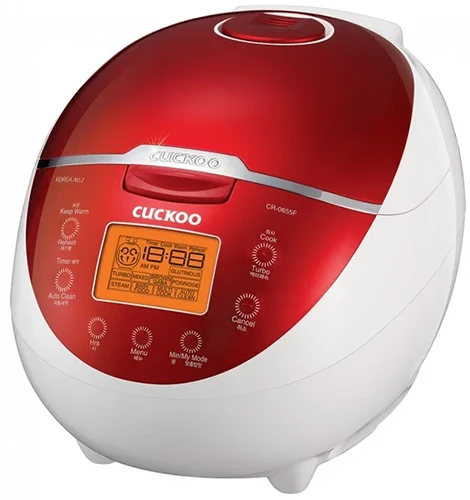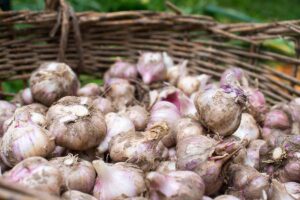I remember discussing black garlic with my friends at a dinner party about 10 years ago.
We’d all heard of this trendy, artisanal ingredient. It sounded dark and mysterious, like a cool goth version of boring, regular white garlic.

We link to vendors to help you find relevant products. If you buy from one of our links, we may earn a commission.
I’m not sure any of us knew exactly what it was at the time, but we felt sophisticated and hip talking about it.
After the party, I went on a hunt to find this alluring specialty plant. But I was surprised to learn that black garlic wasn’t some kind of unusual hybrid species.
Turned out it was just regular Allium sativum, so don’t be embarrassed if you had the same thought – it’s a common mistake.
Ready to forget everything you thought you knew about garlic?
This deliciously transformed version offers a new and, some would say, improved way to consume this traditional, healthy ingredient. So let’s dig deeper into this mystery that’s begging to be solved.
If you’ve heard of black garlic and you’re wondering what all the fuss is about, you’re in the right place. Here’s what I’ll be covering in this article:
What You’ll Learn
Now that you’ve got an idea of what I’ll be covering, pull up a seat at my dinner table. You pour the wine and I’ll set the story straight.
What Is Black Garlic?
Simply put, black garlic is ordinary Allium sativum that’s undergone a cascade of miniature, overlapping and compounded chemical reactions for several consecutive weeks.
This process turns it dark (or black) while also changing the consistency and flavor of the cloves.
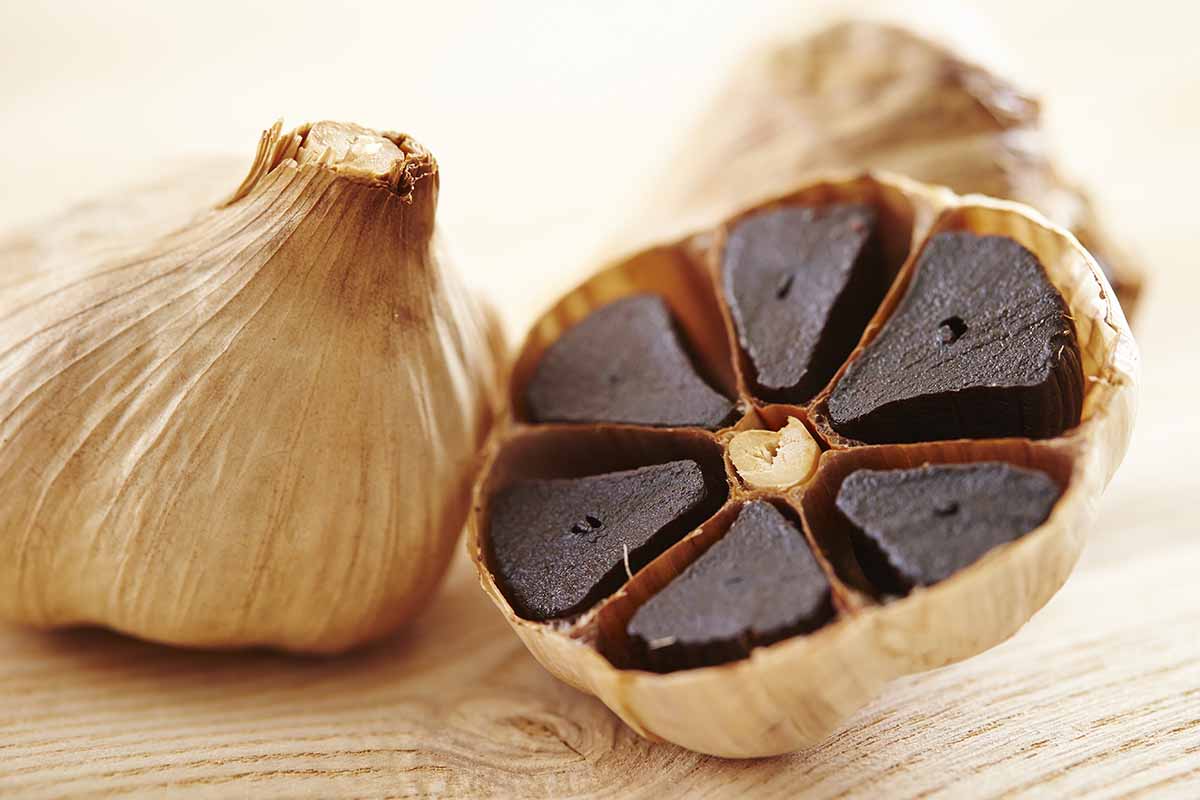
So, what exactly makes it turn black? For science geeks like me, this will be fascinating.
You can find lots of information online, but sources are often conflicting and you may be confused by different terminology used like fermentation and aging.
After asking around, my friend Anna – who happens to be a food wizard – found the best plain language description in her copy of “The Noma Guide to Fermentation,” by Rene Redzepi and David Zilber.
It’s a fantastic book and you can pick up your own copy from Amazon.

The Noma Guide to Fermentation
This book cleared things up. According to the authors, black garlic isn’t fermented or aged within the traditional context of those terms.
Rather, it’s blackened. And blackening is not fermentation. Yes, it is an enzymatic process, but it’s a very unique process.
What makes blackening unique is the temperature. Fungi and bacteria we associate with fermentation can’t survive at certain temperatures.
And because blackening begins to occur at about 140°F (60°C), microbes are killed off, leaving a chemical process to do all the work.
This unique process also relies on moisture. Maintaining a humidity level of 70 to 90 percent is key.
The main chemical reactions taking place are something called the Maillard reaction, along with caramelization, and pyrolysis. I won’t go into detail about these reactions here but you can investigate further on your own if you’re curious.
Together, these reactions cause the color change as well as changes in sugar content and flavor.
These reactions typically happen quickly. When we apply high heat in cooking, we see browning of fruits and vegetables as well as proteins. Or fresh produce may change color when it’s bruised or damaged.
During blackening, smaller, slower reactions take place, build over time, and accumulate.
The result of blackening produces a dark, sweet finished product that is distinctly different from raw or cooked garlic.
Allicin, one of the main bioactive compounds in A. sativum, is associated with numerous potential health benefits.
It also contributes to the strong, and often-called offensive, flavor of fresh garlic. This enzyme doesn’t form until the clove is crushed, chopped, or chewed.
Because allicin levels are low in black garlic, it results in a taste that many people find more pleasing to the palate. And it also leaves you with fresher breath. Bonus!
The benefits of this ingredient are definitely on the radar of researchers. Scientists have been studying its bioactivity and different applications.
Yes, this ingredient is a hot topic in culinary and nutritional domains. This means numerous kinds of black garlic products are available in the market today. Read on to learn more.
History
As with many food products, the origin of black garlic is speculative. Some say it has been mentioned as far back as the sixth century, in the “Tao Te Ching” text.
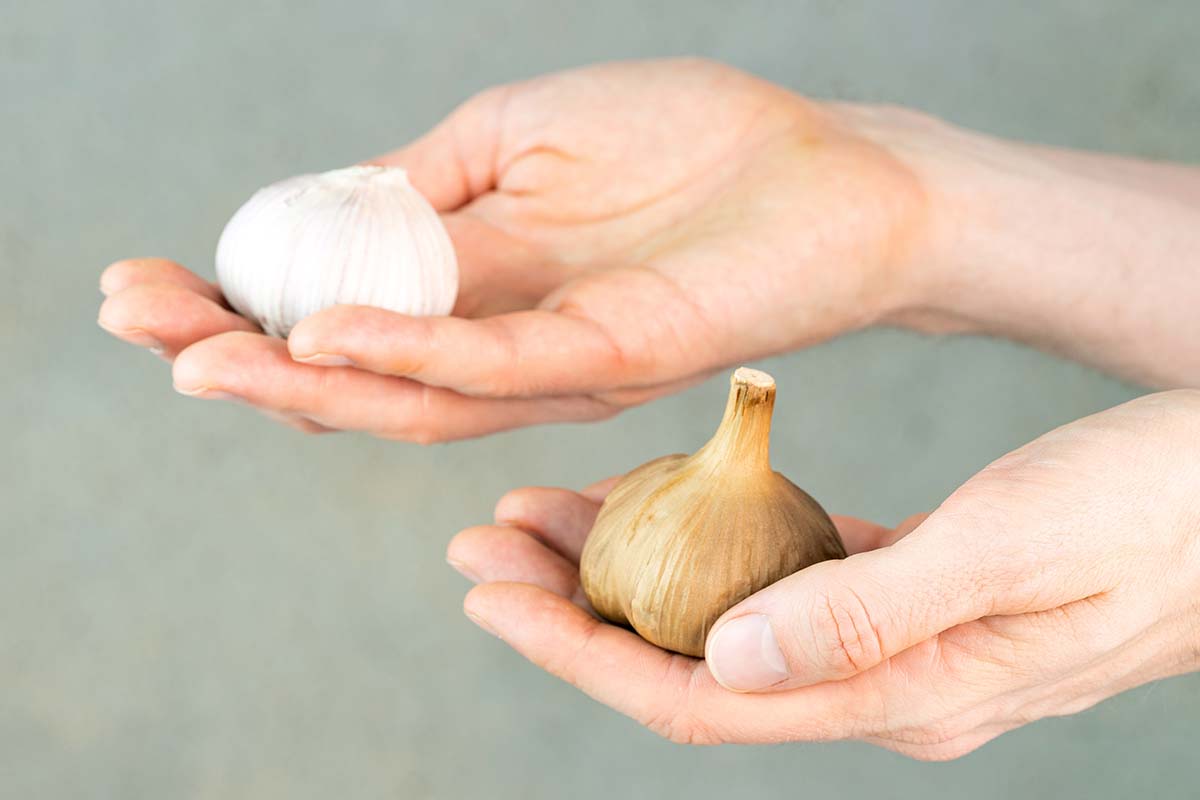
Although that is debatable, we do know that people have been making and consuming it for centuries in South Korea, Japan, and Thailand. But this beneficial delicacy was only introduced to other countries about 15 to 20 years ago.
Traditionally, it was made in clay pots left in the hot sun, with high temperatures maintained for a long period of time.
Today, it’s made using modern devices like rice cookers, slow cookers, or automated commercial equipment. It’s likely that the resulting product differs from that made using traditional, artisanal methods in both quality and nutritional makeup.
Over the past 15 to 20 years, this flavorful ingredient has migrated outside of Asia and gained widespread popularity around the world.
A seemingly endless number of products are now available like energy drinks, chocolates, and condiments – some boasting potential health benefits in their marketing and on their labels.
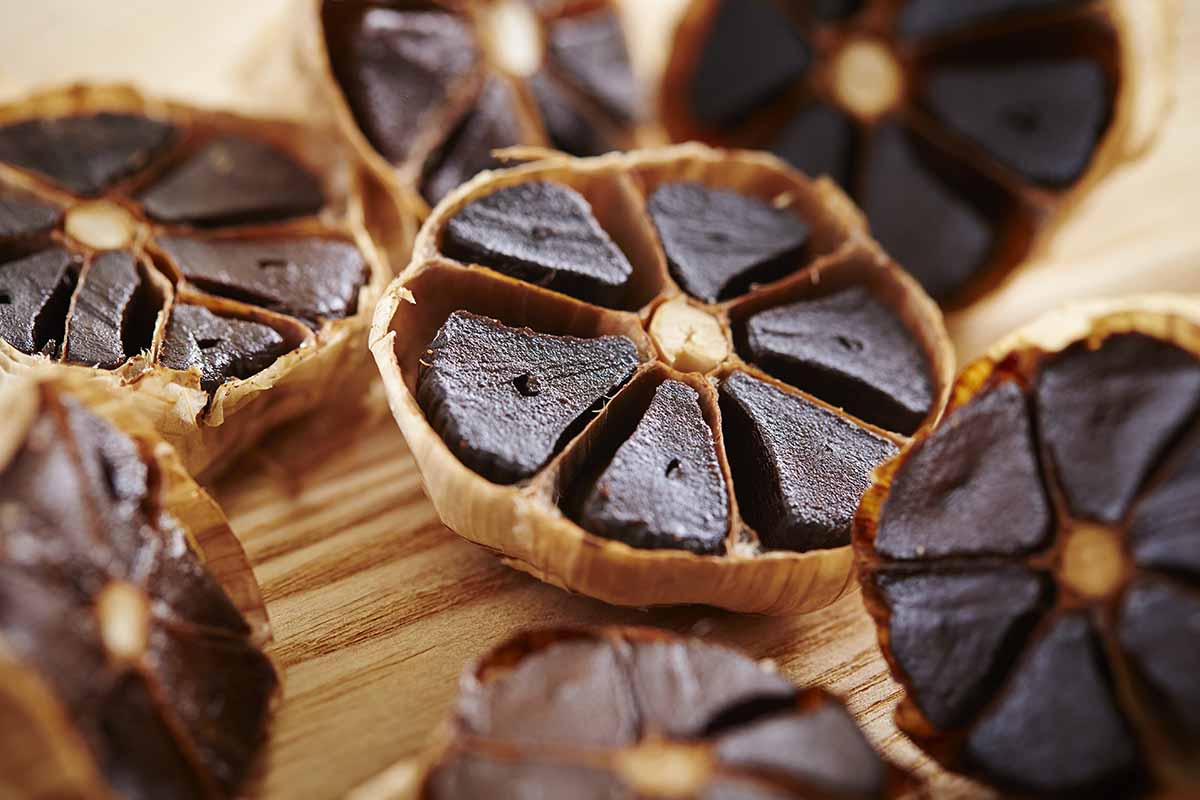
Black garlic has been used medicinally for centuries. Chinese mythology suggests it could grant immortality. I’ll fill you in on the benefits later.
Due to its novel popularity, it has become a coveted and sought-after ingredient.
It’s easier to find in North America now than it was a few years ago. It’s made its way out of specialty stores and to mainstream groceries and online retailers.
I’ll give you some recommendations further on in this article.
If you’re adventurous in the kitchen and looking for a new experiment, you can make your own black garlic at home.
How to Make Black Garlic
If you enjoy black garlic and want to take advantage of its health benefits, making it at home can be simple and cost-effective. There are different methods to blacken garlic, some more complicated than others.
Many restaurants have access to commercial warming cabinets to make it, but if you don’t have access that won’t help.
You could take the time to build a special fermentation, or blackening, chamber, but this could require a bit more work than you’re hoping for. You could even invest in a dedicated black garlic fermenter, designed specifically for making this one specialty food.

Check out this one that’s available via Amazon.
If you want to test the waters and avoid wasting any valuable storage space, try this: many home cooks claim the easiest way to achieve blackening at home is by using a rice cooker.
This small appliance is more versatile and can be used for making more than just black garlic.
Here’s how you do it. You’ll probably second-guess yourself thinking it seems a little too simple, but sometimes simple things are the best.
Start by gathering your supplies. You’ll need:
- Whole, fresh garlic bulbs
- Electric rice cooker
- Electric vacuum sealer, zip top bags, or aluminum foil
- Rack or plate to place in the bottom of the cooker
Yes, that’s all you need. I told you it was simple.
Make sure you’re using freshly harvested summer garlic that hasn’t sprouted, and is fully developed with clean, intact skin.
The moisture content is higher in fresh than in cured garlic, and this is important for successful blackening using this method.
Now follow these steps:
- Place a small wire rack, plate, or bamboo mat in the bottom of the cooker to create a buffer against scorching.
- Seal the garlic in a vacuum pouch, removing about 50 percent of the air. Or use two heavy-duty zip-top plastic bags with most of the air squeezed out. Alternatively, you can also wrap the garlic in a double layer of aluminum foil. Make sure that the heads are arranged in a single layer, not stacked on top of each other.
- Place the wrapped garlic into the cooker and close the lid. Ensure the seal on the lid is tight.
- Turn on the cooker to the “keep warm” setting. Monitor your cooker while in use and be sure to follow the manufacturer’s instructions.
- After about a week, check the progress. The outside skins should be changing to a light brown color and should look and feel slightly damp. If they appear scorched or dry, stop, toss this batch, and start over. Moisture is key!
- Keep checking weekly as described above. The total time to reach optimum blackening will be about six to eight weeks. Cloves should be black, slightly shrunken inside the skins, and easily squished, and the flavor should be sweet and earthy, with an essence of roasted garlic.
Congratulations! You made black garlic!
I know. It sounds too good to be true. But it works.
Basically, the “keep warm” setting on the cooker maintains a temperature of 140 to 190°F and an 80 to 90 percent humidity level with great success. It couldn’t be much easier.
Before I talk about storing your finished product, let’s talk a bit more about the equipment used. Some people report success using their slow cooker or a bread dough proofer.
If you don’t already have one, you might think purchasing a rice cooker just to make this ingredient (or rice) sounds a little extreme. But consider the investment.
These small appliances are quite handy, and many people don’t realize you can cook more than just rice in them.
The multifunctional machines will cook other grains like barley and quinoa. You can even prepare entire meals like oatmeal, chili, and all kinds of favorite recipes.
If you’re looking for a new rice cooker, check out this model made by Cuckoo, available from Wayfair.
Or for a larger unit that can feed a crowd, take a look at this Tiger model, also available from Wayfair.
Learn more about choosing the best rice cooker to meet your needs on our sister site, Foodal.
Storage
Freshly picked garlic that hasn’t been cured isn’t shelf stable.
And cured bulbs, like the kind you purchase from the produce section of your grocery store and cook with, usually keeps for a long time in cool, dark conditions. Black garlic is different.
According to “The Noma Guide to Fermentation,” although it has less moisture and a lower pH than fresh, it’s still not 100 percent shelf stable and requires chilling.
The authors say it should keep well for one week in the fridge, but if you’re not using it right away, you should freeze it for longer storage.
Remove the skins and be sure to wrap it tightly and pack in air-tight bags or containers to prevent freezer burn.
The last thing to mention in regard to making this at home is there could be some risks you should be aware of.
A bacterial pathogen called Clostridium botulinum is sometimes found on garlic. This pathogen can begin to grow at temperatures just under 135°F (57°C). The toxin produced by C. botulinum is deadly to humans, and responsible for botulism.
The good news: black garlic is processed just above that temperature, between 140 and 194°F (60 to 90°C), which inhibits the growth of C. botulinum.
So if you practice safe methods, follow the instructions, and keep your cooker running properly, refrigerating your black garlic promptly after cooling, you should be okay.
Please note that running a small appliance all day, every day for six to eight weeks could potentially be a fire hazard. Follow all manufacturer’s instructions for use closely with the proper precautions in place, and attempt this at your own risk.
Where to Buy
Of course, if the idea of performing this particular chemistry experiment in your kitchen doesn’t seem appealing – or you’re in a hurry and need something quick and easy to use – you may want to leave it to the professionals.
You can find it in specialty markets, and as I mentioned before, you might find it in your local grocery store.
If you shop online, you can source various products – from whole heads to powders, oils, and various condiments.

For whole heads, check out this one made by RioRand on Amazon.
Health Benefits
As I’ve mentioned, this ingredient is often promoted for its various nutritional benefits. But is there any truth to these?

It’s common knowledge that garlic, whether raw or cooked, has long been revered for its health benefits, and there is evidence to back some of these claims.
But specifically with black garlic, when comparing studies we must consider that most to date have been conducted on animals. Human clinical trials have yet to provide us with scientific proof.
Measuring the chemical compounds in black garlic can be complicated, and clinical studies require detailed measurements (as well as funding) to produce accurate results.
Some animal and in vitro studies suggest black garlic demonstrates promising potential health benefits such as antioxidant, antiallergic, antidiabetic, anti-inflammatory, and anticarcinogenic effects.
During my research, I encountered all those conflicting and sometimes interchangeable terms I mentioned at the start. Fermented and aged are the two most common terms used. Few resources use the term blackened, although I suspect this is what they’re actually referring to.
It’s tough to compare numbers, statistics, and data when we’re not sure if we’re all talking about the same methods and finished products. Keep this in mind.
Studies of black garlic are ongoing, and there are a few notable points to consider regarding potential health effects. Generally speaking, it may potentially help to:
- Lower blood pressure
- Lower cholesterol
- Improve insulin resistance
- Lower oxidative stress
- Slow the growth of certain kinds of cancer cells
Two active compounds are thought to be responsible for many of its health benefits:
- S-allylcysteine (SAC)
- S-allylmercaptocysteine (SAMC)
Again, it’s important to remember that many of the potential benefits haven’t been fully tested in humans via clinical trials, and as with any natural supplements and treatments, administering this food as a medicine can come with risks.
A. sativum, whether raw, cooked, blackened, aged, or fermented, may irritate the gastrointestinal tract with the potential to cause heartburn, gas, nausea, and diarrhea – especially if you eat a large amount.
It could also decrease blood pressure and increase the risk of bleeding. So, if you take blood thinners or high blood pressure medications, it’s best to eat it in moderation.
How to Use
Even if the health benefits aren’t proven yet, they quite possibly could be in the future. Until then, there is still a lot to love about it – it’s delicious!
Remember when I said, “Forget everything you thought you knew about garlic?”
Well, keep this in mind when you’re thinking about cooking with the blackened variety. It tastes nothing like regular A. sativum, offering a completely different range of culinary uses.

Expect a chewy texture, sort of like raisins, with a mild, sweet garlic flavor, and undertones of smoky, caramelized molasses. Many people find it hard to describe.
If you’re familiar with the term umami, think of that. Umami is the taste of amino acids and nucleotides (think protein) – basically a pleasant, savory, meaty flavor.
To me, umami is at the core of what I call comfort foods.
Black garlic can add complexity and depth to other dishes, so it is a very versatile ingredient. From breakfast to appetizers and main dishes, to desserts and everything in between, the uses are endless.
Starting at the most basic level, you can snack on plain black garlic. Just pop a clove into your mouth. Bonus: it won’t leave you with vampire-slayer breath.
Puree and add it to savory or sweet condiments, sauces, marinades, salad dressings, and spreads.
If you’re in the middle of cooking and discover that your recipe tastes like it’s missing something, but you’re just not quite sure what it is, try adding black garlic.
It may solve the puzzle and elevate your dish to the level you’re hoping to achieve!
Try it on or with roasted vegetables, meats, soups, stir-fry, and even ice cream – seriously, if you can dream it up, it’s probably going to be delicious.
Check out some recipe ideas in the next section.
Recipe Ideas
If you’ve read some of my other articles, you’ll know that I’m creative in the kitchen.
I am not strict with measurements, and I rarely record amounts. I taste as I go and then adjust based on instinct. Everything I share is low-stress and simple for beginners.
The above list of ideas for using this ingredient is not exhaustive. A quick online search will spark inspiration for new recipes, depending on your cooking goals.

Or check out this cookbook by Juile Hatfield, “Cooking with Black Garlic: 50 Delicious Black Garlic Recipes,” available on Amazon.
Here are a few simple recipe ideas to get you started:
Tab’s Black Garlic Hummus
- 1 15-ounce can of chickpeas (garbanzo beans)
- 2 full bulbs of black garlic (adjust more or less according to your taste)
- 1 clove of raw garlic (optional)
- 3 tablespoons of tahini (if you like a nutty, sesame flavor)
- 1/2 to 1 teaspoon of salt (adjust according to taste)
- 1 tablespoon extra-virgin olive oil
- Chopped fresh herbs, sesame seeds, and/or paprika, for garnish (optional)
Remove the skin from the black garlic cloves by squeezing or peeling.
Toss these and the remaining ingredients into your food processor and whiz everything up until it becomes smooth.
If it’s too thick, add a sprinkle of water and whiz again. Taste and adjust to your liking.
Transfer to a serving dish, drizzle with a bit more oil, garnish with herbs like parsley or chives, sesame seeds, and maybe a dash of paprika. It’s really up to you.
Experiment, and try different variations. Use your imagination. Get creative here!
Serve with some warm pita or toasted baguette slices. Enjoy!
Tab’s Black Garlic and Mushroom Pasta
Black garlic and mushrooms served together seem like a no-brainer to me.
If I’ve got extra time, I like to make my own pasta because the noodles are fresh and tender, taking the dish to the next level.
But feel free to use your favorite dried noodles from the grocery store. Try a thick one, like tagliatelle!
- 1 16-ounce package of noodles
- 2 full bulbs of black garlic
- 1 8-ounce package of mushrooms*, chopped or sliced
- 2 tablespoons of unsalted butter or olive oil, plus more oil as needed
- Salt, to taste
- Juice of 1 lemon, added to taste
- 1 tablespoon fresh thyme or tarragon leaves
- Black pepper, to taste
*A note on mushrooms: don’t overcomplicate this – try cremini, oyster, shiitake, or a combination. You can also rehydrate dried mushrooms prior to use. Dice, chop, or slice into small bits or large chunks – you choose!
Check out our roundup of the best mushroom kits if you’re interested in growing your own.
And remember that mushrooms will shrink when you cook them, so feel free to use more than what I’ve recommended here if you adore them like I do. Personally, I’d use more.
- Cook your pasta so it’s al dente – not totally cooked to mush, and still a bit firm to bite. Drain and set aside.
- While the pasta is cooking, separate the cloves by squeezing or peeling to remove the skins, then puree or finely mash them and set aside.
- In a large saute pan, cook the mushrooms in the butter or oil. Season with salt to help them release moisture. If they’re too dry, add a bit of water to keep them going.
- When the mushrooms are softened and lightly browned on all sides, add the pureed garlic and stir to combine. Add your al dente noodles to the saute pan.
- Add the lemon juice. I adore lemon, so I use a lot, but if you want just enough to brighten the flavor, try about half the juice, taste, and add more if you like where it’s going. Toss in your herbs.
- Mix everything gently, adding a bit of oil if it feels too dry. Season with salt and pepper to taste. Serve.
This recipe is quick and simple. You can try different combinations of ingredients like basil with toasted pine nuts to replace the tarragon or thyme and lemon.
Again, have fun, get creative, and channel your inner chef!
A Dinner Party Conversation Topic
Now you’ve got the full scoop on black garlic including health benefits, where to buy it, how to make and store it, different ways to use it, and some recipe ideas.

Whether hosting or attending your next dinner party, you won’t make the mistake of suggesting it’s a special hybrid to try growing in your garden.
You can impress your friends and confidently educate them on this intriguing ingredient.
Try one or both of my easy recipes and let me know your thoughts. I’d love to try your ideas too. And if you’ve made your own black garlic at home, please share your experiences and tips. Drop them in the comments below!
To learn more about garlic, peruse our thorough collection of growing guides, starting with these:
